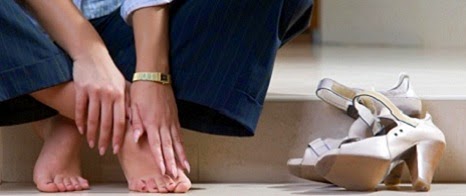Often the shoes are comfy in the shop, but when you bring them home and wear them a little, they start to become uncomfortable.
Here are some Podiatrist tips for buying shoes
Tips for Buying Shoes:
- Always go shoe shopping in the afternoon or evening. Your feet can swell over the course of the day.
- Alwave both feet measured while standing. One foot is usually larger than the other, buy shoes to accommodate the larger foot.
- Shoes should have laces, velcro or some other fastening system. As a general rule, avoid backless or slip-on shoes if you plan to wear them daily.
- Look for a patterned or textured sole, and this will provide traction and help prevent slipping.
- Soles should be sturdy and thick enough to protect the feet from pain and injury, but the sole also needs to be flexible too so that it will bend with the foot.
- Never buy shoes that are more than one size too large. Shoes that are too big can cause tripping and develop foot problems.
- The shoe size should have enough room at the toes to place your thumb between the end of your longest toe and the seam of the shoe.
- The shoe should not be able to twist (like twisting a wet towel).
- Shoes should feel comfortable and cause no rubbing.
 Schedule an Appointment
Skip to content
Schedule an Appointment
Skip to content

 Schedule an
Schedule an 
